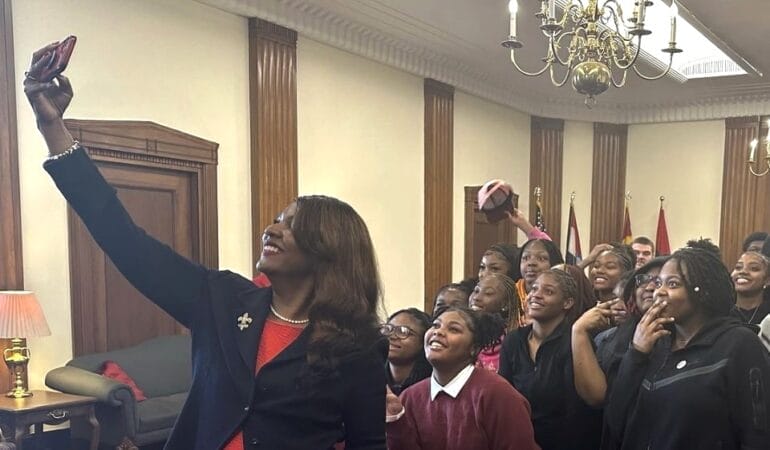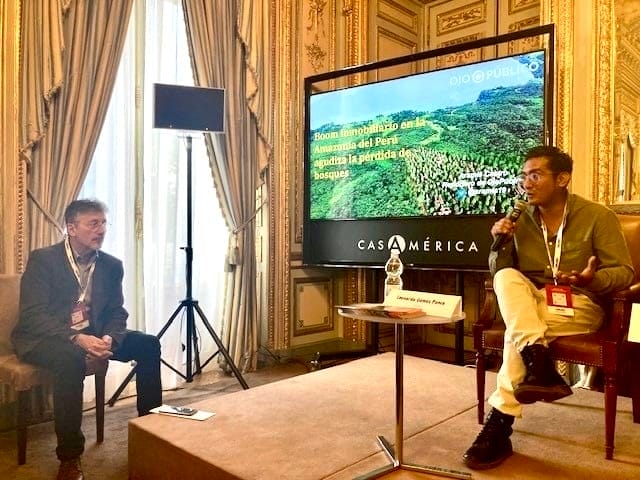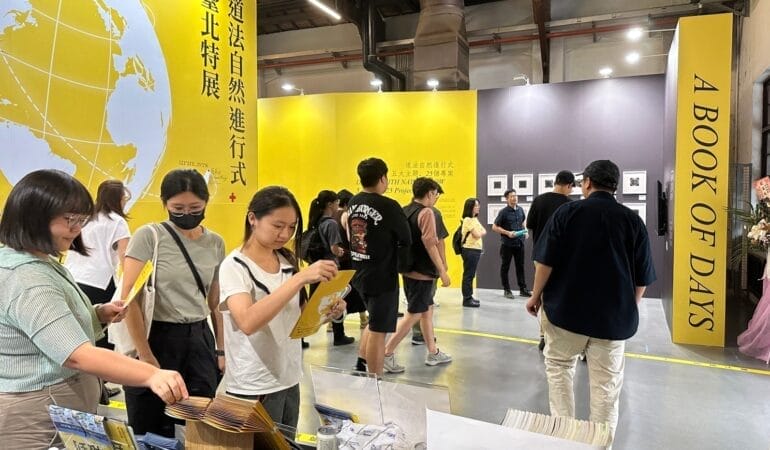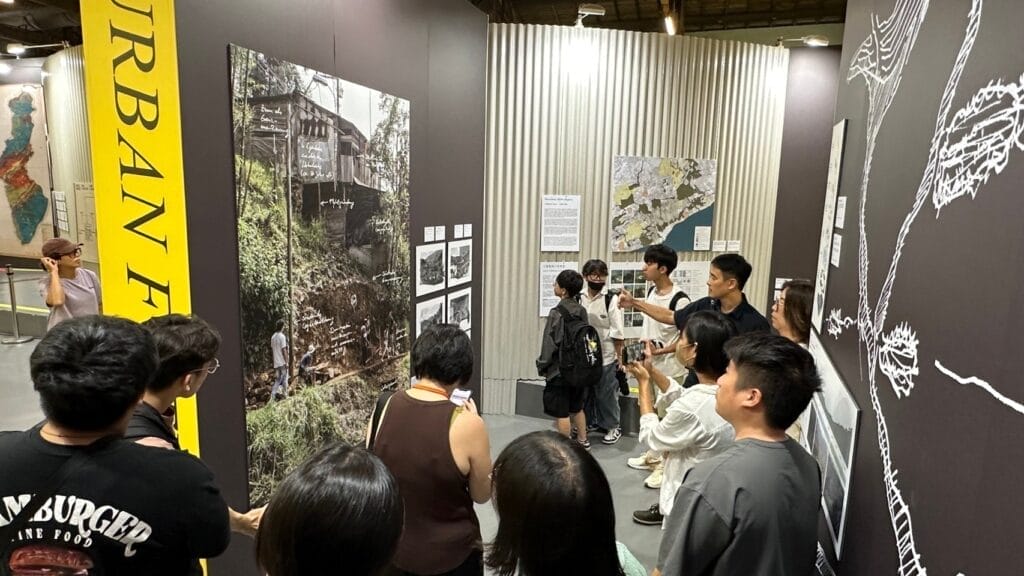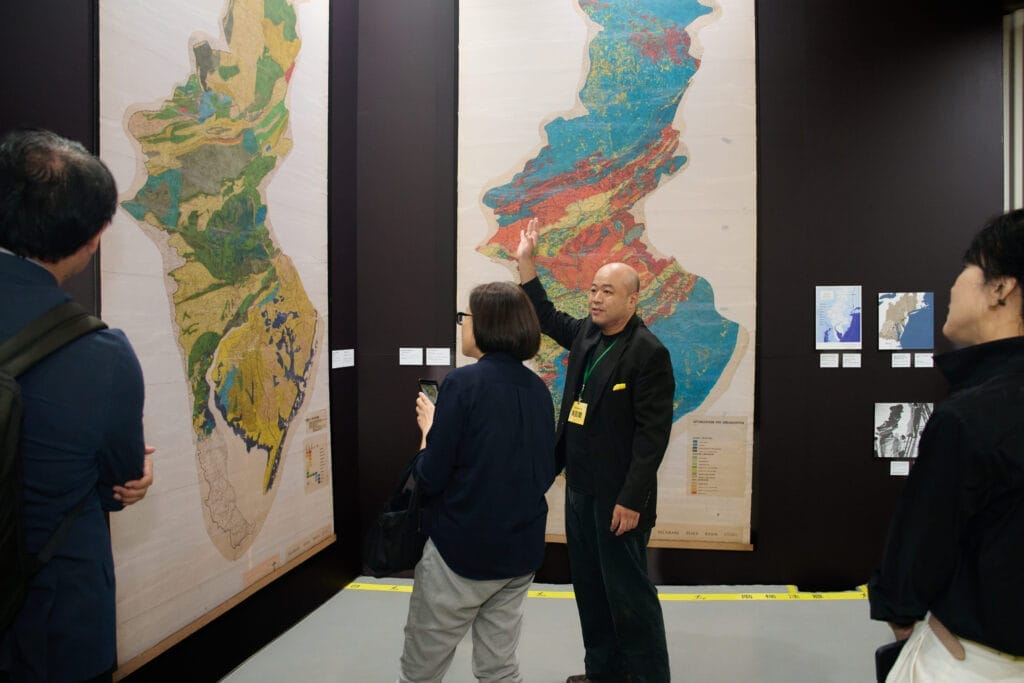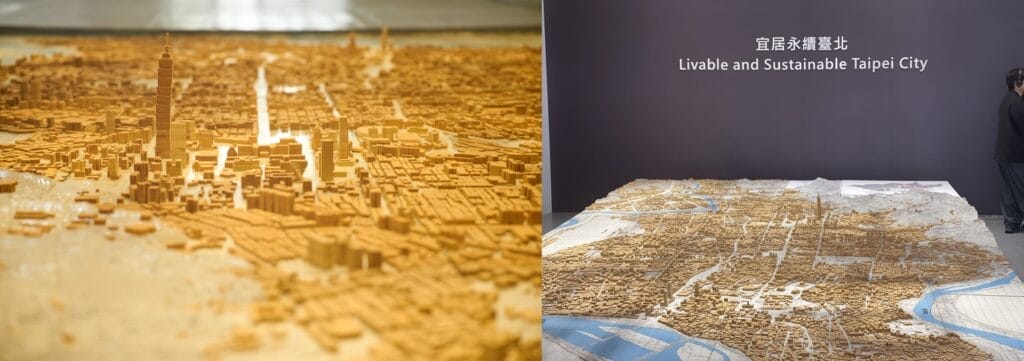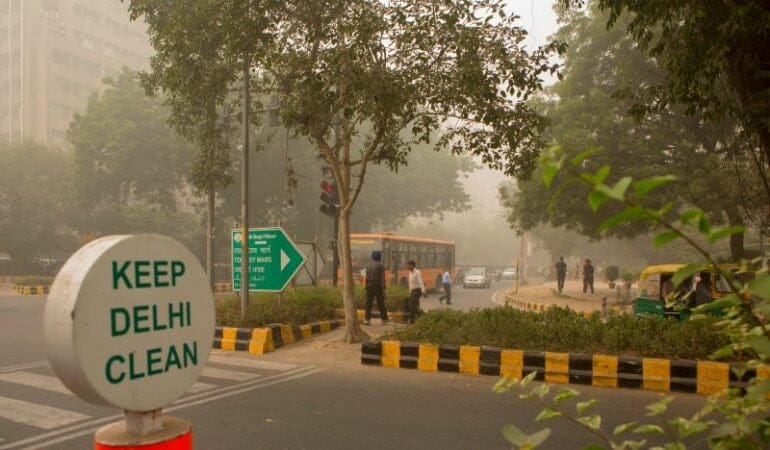Tishaura Jones was sworn in as the 47th mayor of St. Louis—and the first Black female mayor in the city’s history—on April 20, 2021. Described as a history maker on a mission, Jones served two terms in the Missouri House of Representatives, was selected as the first African American woman in Missouri history to hold the position of assistant minority floor leader, and was also the first African American woman to serve as treasurer of St. Louis. She holds a bachelor’s degree in finance from Hampton University and a master’s degree in health administration from the St. Louis University School of Public Health. Jones is also a graduate of the Executives in State and Local Government program at Harvard University’s Kennedy School of Government. She spoke with senior fellow Anthony Flint earlier this year for the Land Matters podcast. This interview has been edited and condensed for clarity.
Anthony Flint: For those rooting for a rebound for legacy cities, St. Louis has been a bit of a roller coaster, from the renaissance of Washington Avenue to the post-COVID downtown doom loop and continuing population loss. What’s your assessment of the city’s strengths and weaknesses at this point?
Tishaura Jones: I would say that in the past three years, we have been laser focused on doing the nonsexy work to lay the foundation for future growth. And that is, the work within City Hall to make City Hall easier to navigate, easier to participate in, and easier to understand. And then adding different pieces that are looking to the future. We just opened an Office of New Americans because we realized that part of population growth is going to come from our refugees and other international citizens who choose St. Louis as a home who may be fleeing violent situations. We’ve accepted refugees from Afghanistan, from Ukraine, and back in the ’90s, we accepted refugees from Bosnia. So we have the largest Bosnian population outside of Europe. Knowing those things and knowing those pieces of the puzzle, also looking at our severe population loss of African Americans, we are laying the groundwork to make sure that St. Louis is equitable and a city that everybody can participate in; we’re focused on rebuilding areas and investing in areas that haven’t seen investment in decades.
AF: Speaking of investment, we’ve been looking at the Inflation Reduction Act and how it is pumping billions for clean energy manufacturing into economically distressed areas, including St. Louis. Do you consider the region part of a potential new “battery belt,” and can this clean energy transition be a savior?
TJ: I would say partly. We haven’t seen a lot of companies investing and exploring that technology. We only have one company that has taken advantage of the money from the Inflation Reduction Act to expand its business. Where we see the most growth is in defense and geospatial, as well as advanced manufacturing. Those are the areas and industries that we have focused our attention on.
AF: Tell us more about the investments that are going on. With the backdrop of federal funding, you also have the $250 million NFL settlement from the loss of the Rams. There seems to be an unprecedented amount of funding and an approaching deadline for spending it. How are you managing that?
TJ: We received almost $500 million in ARPA funding, which is really large for a city our size. We’ve made intentional decisions to put that money out in communities that haven’t seen investment in decades. For St. Louis, that’s North St. Louis, which is 99 percent African American, and a part of Southeast St. Louis, which is about 60 to 65 percent African American. Both of those areas have high levels of poverty, high levels of vacancy, and also high levels of crime. So we are making intentional investments in those areas, bringing back business and industry, building new homes. There are places where a mortgage hasn’t been generated in a neighborhood for 10 or 15 years . . . we’re trying to rebuild a market in order to build more new market-rate and affordable homes.

The Monarch at MLK was an old electrical plant that sat vacant for decades. We are turning that into a world-class workforce development hub, co-located with companies that will be producing their products on site. Our Office of Violence Prevention will go there, and our Workforce Development Agency . . . our Economic Empowerment Center will also go there, which is going to help entrepreneurs either start or grow their businesses, as well as our Land Reutilization Authority, our land bank. They have a lot of equipment that they use to maintain our vacant lots; we have about 7,000 vacant lots that we are currently maintaining.
We’re co-locating essential services in the community so people don’t always have to come downtown to City Hall. We hope that this facility is going to be a hub of activity, and we also own 15 acres around it, so we’re going to build up around it as well, with a daycare center and housing and other amenities.
AF: For all the physical planning and placemaking that is part of the mayor’s job, what are the key elements of addressing violent crime, which understandably is on the minds of so many residents?
TJ: The year before I came into office, which was a pandemic year, we had 263 homicides. As of the end of 2023, that number is down to 158. That’s a 40 percent decrease. Crime is also decreasing in other categories. . . . It’s because of several things that we put in place. It’s not just one thing. We started by opening a new Office of Violence Prevention, where we work with community organizations because people who are closest to the problem are closest to the solution.
We provide grants and technical assistance to community organizations on the ground who are doing this violence prevention work, employing trusted messengers, taking care of mental health, substance abuse. We also started a cops-and-clinicians program where we pair an officer with a mental health professional to be deployed to certain calls. We’re trying to deploy the right professional to the right call. That program alone has saved us thousands of man hours and millions of dollars because we’ve diverted people from emergency rooms, we’ve diverted people from jail and entering the criminal justice system. . . . Also for the first time in our city’s history, I hired a police chief from outside of the city. He’s been in several cities, Wilmington, Delaware, Chicago, and started his career in New York. He applies business practices to policing . . . and deploys our resources—which are finite—based on what the data is telling us. In his first full year being police chief, homicides were reduced 20 percent. We’re not quite where we want to be, but we’re definitely moving in the right direction with all of these pieces working together.
AF: I want to turn to infrastructure, which plays a role in the overall vibe of the city. Have you seen any difference in the results of the infrastructure plan from two years ago, which included some small but important things like sidewalk repair, lighting, and trimming weeds?
TJ: Yes. I sit as the chair of our local metropolitan planning organization, the East-West Gateway [Council] of Governments. Most of our infrastructure dollars flow through there for our various transportation projects. But we also, as a city, set aside almost $50 million to repave our major thoroughfares. And we currently have about $300 million in projects going on, whether it’s repaving our major thoroughfares or our side streets. Great Rivers Greenway is building the Brickline Greenway—think of Atlanta or Denver, where they have those greenways that are bike and ped paths. We will be expanding ours to connect our major parks. So in about five years, you’ll be able to ride your bike from the Arch all the way to Forest Park, and then to a park on the south side called Tower Grove Park, to a park on the north side called Fairground Park. It’ll all be connected through a series of bike and ped pathways.
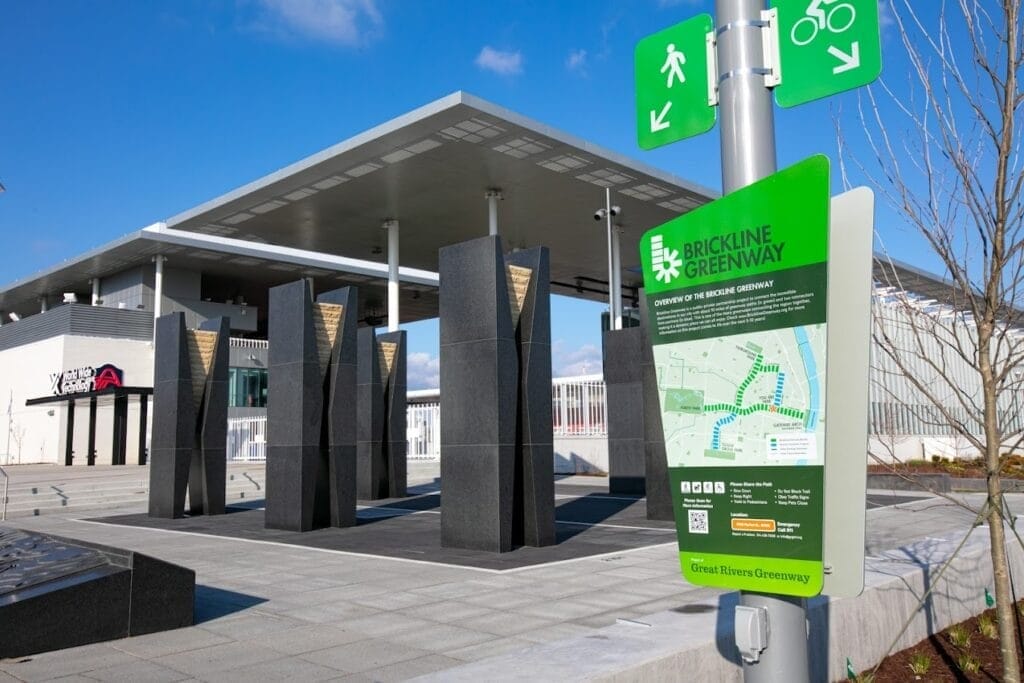
We’re hoping to also start construction on expanding transit, taking advantage of the money that’s available through the Department of Transportation, expanding our light rail. Then we’re also going to apply for funding to redo our airport. So in about five to seven years, St. Louis is going to have a new airport, a new transit line, new bike and ped pathways, and a whole host of infrastructure projects will be almost finished or at completion.
AF: How can a city like St. Louis contribute to the effort to combat climate change while at the same time, needing to build resilience to manage extreme heat, for example?
TJ: Today, as we are recording this interview, it’s about 100 degrees outside, which is normal for August in St. Louis, but it’s not normal for those who have respiratory problems. We also received a multimillion-dollar grant from the federal government to plant more trees to make sure certain neighborhoods are not heat islands. Just with the disinvestment that happened in certain portions of our community, there weren’t trees replanted. We’re going to be planting more trees, hopefully cooling down the city as we do that. We’re also part of the Bloomberg Sustainable Cities Initiative, where we will be employing about three to four people for the next three to four years to identify other sustainability projects and how those intersect with economic justice.
AF: A lot of the mayors that we’ve interviewed have talked a little bit about the stress and heavy weight of the job. I’d like to ask you, on a personal level, how do you manage all of these challenges day to day?
TJ: The answer I usually give is that I rely on three things: Jesus, my Peloton, and bourbon, and not always in that order. But I think I have a fourth weight that’s on my shoulders, which is I’m a single mom of the most adorable and probably the tallest 17-year-old you’ll ever see. He is about 6′ 8″, and he’s a junior in high school. So I also have to juggle that in addition to being mayor. I would say I do it all by the grace of God. I feel like this is the work that God called me to do, and because of that, it doesn’t feel like work. I really enjoy and love what I do. I love being able to see in real time the changes that we’re making—either brick and mortar or the lives that we’re changing. So that is the job satisfaction that helps me rest every night.
Anthony Flint is a senior fellow at the Lincoln Institute of Land Policy, host of the Land Matters podcast, and a contributing editor of Land Lines.
Lead image: St. Louis Mayor Tishaura Jones takes a selfie at City Hall with local middle school and high school students. Credit: St. Louis Mayor’s Office via Facebook.

